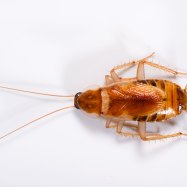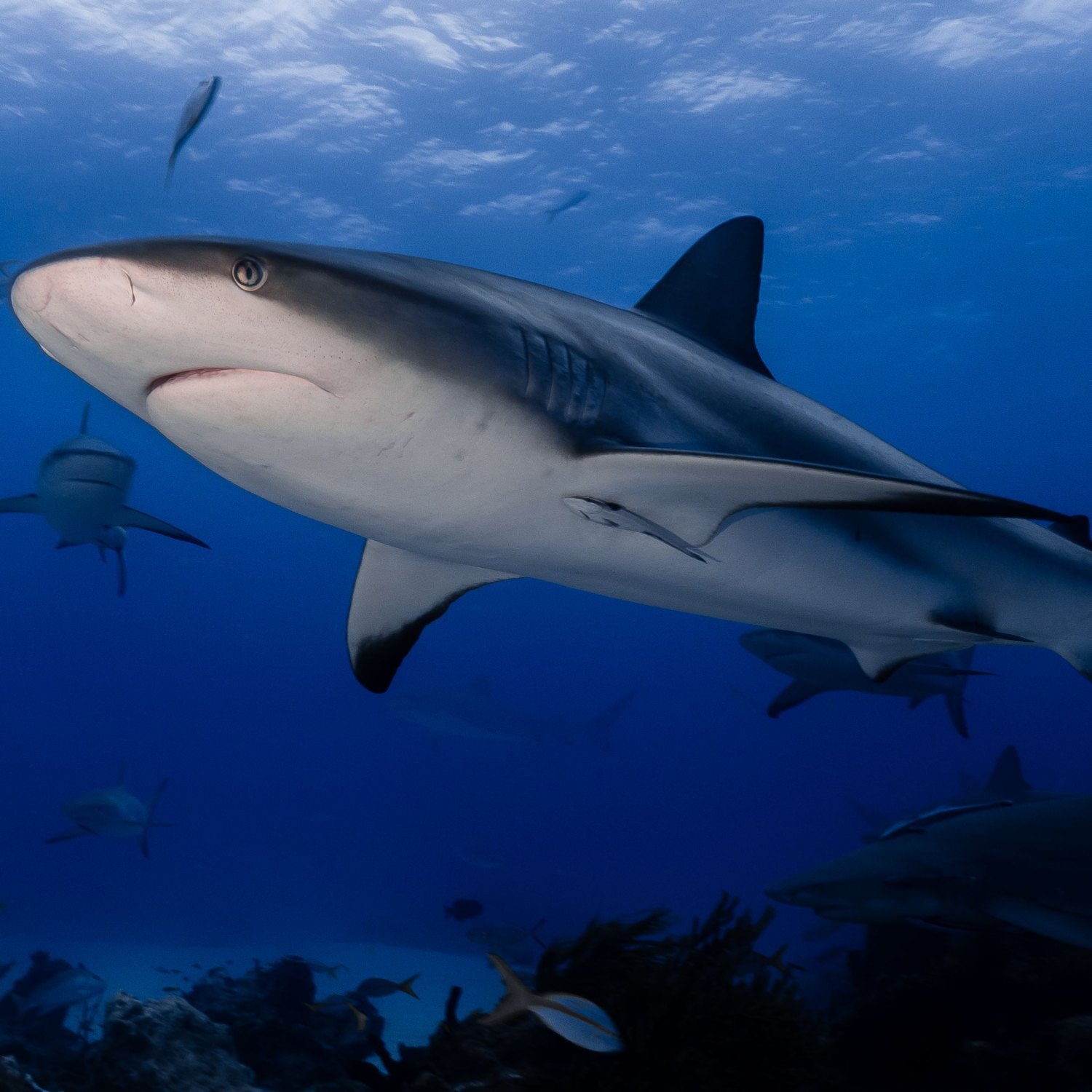
Caribbean Reef Shark
Up to 9 feet
The Caribbean Reef Shark, found in the warm waters of the Caribbean islands, Florida, and Bahamas, can grow up to 9 feet long. Part of the Carcharhinidae family, these sharks have a streamlined and slender body shape, making them swift and efficient hunters in their habitat. Swim with caution and admire these magnificent creatures in their natural habitat. #CaribbeanReefShark #Carcharhinidae #Florida #Bahamas
Animal Details Summary:
Common Name: Caribbean Reef Shark
Kingdom: Animalia
Habitat: Coral reefs, shallow coastal waters
The Majestic Caribbean Reef Shark: A Threatened Beauty of the Western Atlantic Ocean
The Caribbean Reef Shark, scientifically known as Carcharhinus perezi, is a species of shark found in the western Atlantic Ocean. With its sleek grey to brownish-gray body, streamlined shape, and impressive length of up to 9 feet, this shark is a powerful and formidable creature of the sea. However, despite its fierce appearance, the Caribbean Reef Shark is a vulnerable species that needs our attention and protection.A Kingdom Under Threat
As a member of the animal kingdom, the Caribbean Reef Shark belongs to the phylum Chordata and the class Chondrichthyes, which includes all cartilaginous fish Caribbean Reef Shark. They are further classified into the order Carcharhiniformes and the family Carcharhinidae, which also includes other well-known sharks such as the Tiger Shark and the Sandbar Shark.A Habitat Like No Other
The Caribbean Reef Shark is mostly found in warm, shallow coastal waters and coral reefs, making its home in the beautiful Caribbean Sea and the Gulf of Mexico. Its name, "Caribbean Reef Shark," is derived from its preferred habitat and geographical distribution. These sharks can also be found in the Caribbean islands, Florida, and the Bahamas. They are known to migrate long distances, and their movements are heavily influenced by the availability of food.A Carnivorous Diet
The Caribbean Reef Shark, like all sharks, is a carnivore and plays a crucial role in the marine ecosystem. Their diet mainly consists of bony fish, small sharks, squid, and crustaceans. These sharks are also known for their unique feeding behavior, where they form a "feeding chain" by swimming in circles and taking turns to feed. This behavior is believed to help them catch more food and reduce the chance of competition for resources Coastal Carpet Python.A Grey Beauty of the Ocean
One of the most striking features of the Caribbean Reef Shark is its coloration. Their bodies are predominantly grey to brownish-gray, making them blend in with the rocky seabed and coral reefs, making it easier for them to hunt and evade predators. They also have a white underbelly, which provides them with camouflage when seen from below, making it difficult for other animals to spot them.Aerodynamic Body and Impressive Length
In addition to their coloration, the Caribbean Reef Shark has a sleek and streamlined body shape, which allows them to swim effortlessly through the water. Their body is also slender, which makes them agile and able to make quick turns while hunting. These sharks can reach impressive lengths of up to 9 feet, with females being larger than males. They also have a relatively long lifespan of up to 25 years.The Predator Becomes the Prey
Despite being a predator in the ocean, the Caribbean Reef Shark faces threats from other sharks, including the Tiger Shark and the Bull Shark. These larger and more aggressive sharks often prey on the Caribbean Reef Shark, making them vulnerable and contributing to the decline in their population.A Human-made Crisis
Sadly, one of the biggest threats to the Caribbean Reef Shark is human activity. This includes overfishing, where sharks are caught for their fins, used in shark fin soup, and their meat. Apart from direct harvesting, these sharks also face unintentional threats from commercial fishing practices such as longlining and gillnetting, where they can become bycatch. This overexploitation of shark populations has led to a significant decline in their numbers, making them an endangered species.A Need for Conservation
The decline in the population of the Caribbean Reef Shark is a cause for concern, as these sharks play a vital role in maintaining the balance of the marine ecosystem. As top predators, they help regulate the population of lower-level species, ensuring the health and stability of the coral reefs and ocean.A Call to Action
To prevent the Caribbean Reef Shark from becoming extinct, urgent conservation measures need to be taken. This includes implementing stricter fishing regulations, creating protected areas where these sharks can thrive, and studying their behavior and migration patterns to better understand and protect their population. Efforts are also being made to educate the public about the importance of sharks and the need for their conservation.A Threatened Beauty Worth Saving
In conclusion, the Caribbean Reef Shark is a fascinating and magnificent creature that is facing numerous challenges in its natural habitat. As a threatened species, it is our responsibility to protect and conserve these sharks for future generations to admire and learn from. Through conservation efforts and awareness, we can ensure that these stunning creatures continue to roam the western Atlantic Ocean and remain a symbol of beauty and resilience. Let us all join hands and contribute to the conservation of the Caribbean Reef Shark before it's too late.

Caribbean Reef Shark
Animal Details Caribbean Reef Shark - Scientific Name: Carcharhinus perezi
- Category: Animals C
- Scientific Name: Carcharhinus perezi
- Common Name: Caribbean Reef Shark
- Kingdom: Animalia
- Phylum: Chordata
- Class: Chondrichthyes
- Order: Carcharhiniformes
- Family: Carcharhinidae
- Habitat: Coral reefs, shallow coastal waters
- Feeding Method: Carnivorous
- Geographical Distribution: Western Atlantic Ocean
- Country of Origin: Caribbean Sea, Gulf of Mexico
- Location: Caribbean islands, Florida, Bahamas
- Animal Coloration: Grey to brownish-gray
- Body Shape: Streamlined and slender
- Length: Up to 9 feet
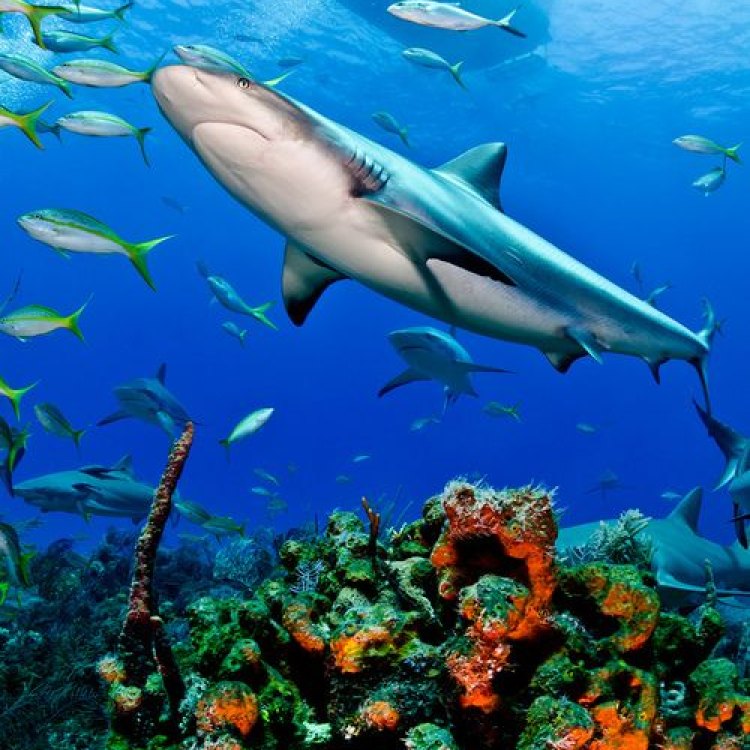
Caribbean Reef Shark
- Adult Size: 5.5 to 9 feet
- Average Lifespan: 25 to 30 years
- Reproduction: Viviparous (gives birth to live young)
- Reproductive Behavior: Mating occurs in spring or early summer
- Sound or Call: No known sound or call
- Migration Pattern: Some individuals undergo seasonal migration
- Social Groups: Often swim in groups
- Behavior: Primarily nocturnal and solitary
- Threats: Overfishing and habitat destruction
- Conservation Status: Near Threatened
- Impact on Ecosystem: Maintains balance within the coral reef ecosystem
- Human Use: Fished for its meat and fins, also popular in ecotourism
- Distinctive Features: Prominent, rounded snout and large, serrated teeth
- Interesting Facts: Caribbean Reef Sharks are known to gather in large groups during mating season
- Predator: No natural predators
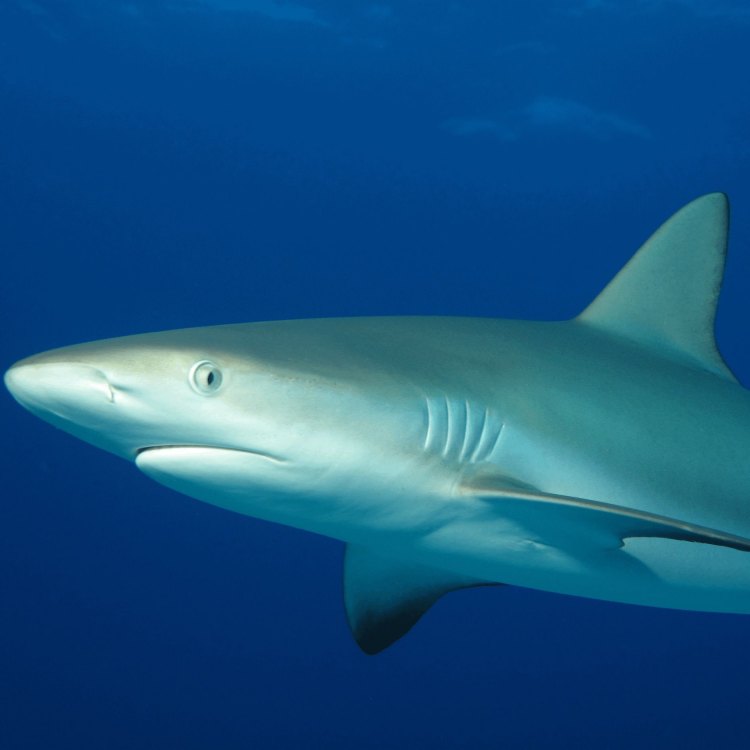
Carcharhinus perezi
The Majestic and Mysterious Caribbean Reef Shark: A Vital Player in Coral Reef Ecosystems
The ocean is a vast, mysterious, and captivating world teeming with life. Within its depths lie creatures that are both awe-inspiring and essential to maintaining the delicate balance of marine ecosystems. Among these creatures is the Caribbean Reef Shark, a powerful and majestic predator that roams the waters of the Caribbean Sea.With an average adult size of 5 PeaceOfAnimals.Com.5 to 9 feet and a lifespan of 25 to 30 years, the Caribbean Reef Shark is a formidable force in the ocean. Its distinctive features include a prominent, rounded snout and large, serrated teeth, making them easily recognizable to divers and snorkelers. These apex predators play a crucial role in maintaining the health and diversity of coral reefs, making them a crucial species to study and protect.
Like many other shark species, the Caribbean Reef Shark is viviparous, meaning it gives birth to live young. It reproduces through internal fertilization, with mating occurring in spring or early summer. This timeframe is significant as it coincides with the peak season for tourists, allowing divers and researchers to observe their mating behavior in their natural habitat.
Interestingly, there is no known sound or call associated with the Caribbean Reef Shark. Despite this, they have a complex mating ritual, which typically involves male sharks competing for the attention of a female. This behavior can be intense, with males using their powerful jaws and body language to impress the female and secure their mating position Coastal Taipan.
Some individuals of this species also undergo seasonal migration, which adds another layer of mystery to their behavior. It is believed that they may do this to follow their food sources or find more optimal conditions for breeding. However, further research is needed to fully understand their migration patterns.
The Caribbean Reef Sharks are primarily solitary and nocturnal, with their hunting and feeding activity mostly happening at night. This behavior makes them difficult to study, but researchers have observed that they often swim in groups, especially during mating season or when hunting together for larger prey.
Sadly, Caribbean Reef Sharks face numerous threats, primarily due to overfishing and habitat destruction. They are often victims of by-catch, unintentionally caught in fishing nets meant for other species. Additionally, their habitat, the coral reefs, is under threat from pollution and climate change. These factors have led to the Caribbean Reef Shark being classified as 'Near Threatened' on the IUCN Red List, highlighting the need for conservation efforts to protect this vital species.
So, what is the impact of the Caribbean Reef Shark on the coral reef ecosystem? These predators play a crucial role in maintaining a balanced food chain within their habitat. As top predators, they control the population of smaller prey species, preventing them from overgrazing on algae and damaging the reef. In turn, this helps to maintain a healthy and diverse coral reef ecosystem, which is essential for the ocean's overall health.
Unfortunately, humans also play a significant role in the decline of Caribbean Reef Shark populations. These sharks are fished for their meat, fins, and other body parts, which are considered delicacies in some cultures. They are also victims of the shark fin trade, where their fins are harvested and sold for use in shark fin soup. Additionally, the Caribbean Reef Shark is popular in ecotourism, where divers pay to encounter these majestic creatures in their natural habitat. While this encourages conservation efforts, it can also lead to disturbances and potential harm to the sharks.
Despite facing numerous threats and challenges, there are still ways to protect and conserve the Caribbean Reef Shark. One effective method is through responsible and sustainable fishing practices, such as implementing catch and release programs for this and other shark species. Raising awareness about their importance in the ecosystem and the consequences of overfishing is also crucial in promoting their conservation.
As individuals, we can also make a difference by choosing sustainable seafood options and supporting ecotourism companies that prioritize the well-being of marine animals. By taking small steps, we can contribute to the preservation of these magnificent creatures and their habitat.
In conclusion, the Caribbean Reef Shark is an iconic and vital species in the Caribbean Sea and beyond. Its unique features, reproductive behavior, and role in the coral reef ecosystem make it a fascinating subject for researchers and a majestic sight for divers. However, these sharks also face numerous threats, highlighting the urgent need for conservation efforts to protect their populations. With continued research and conservation efforts, we can ensure that the Caribbean Reef Shark continues to thrive and maintain the delicate balance of our ocean's ecosystem.
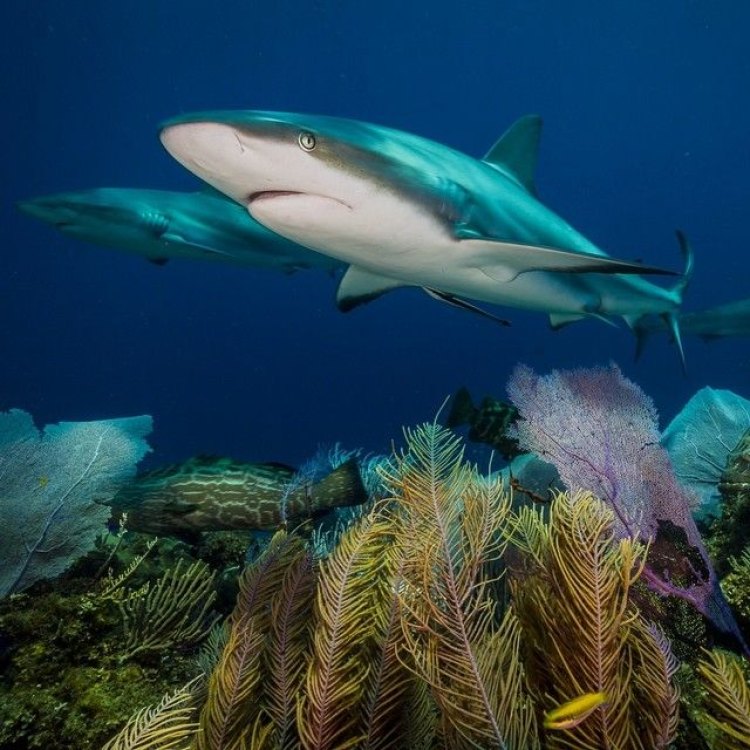
The Majestic Caribbean Reef Shark: A Threatened Beauty of the Western Atlantic Ocean
Disclaimer: The content provided is for informational purposes only. We cannot guarantee the accuracy of the information on this page 100%. All information provided here may change without prior notice.









